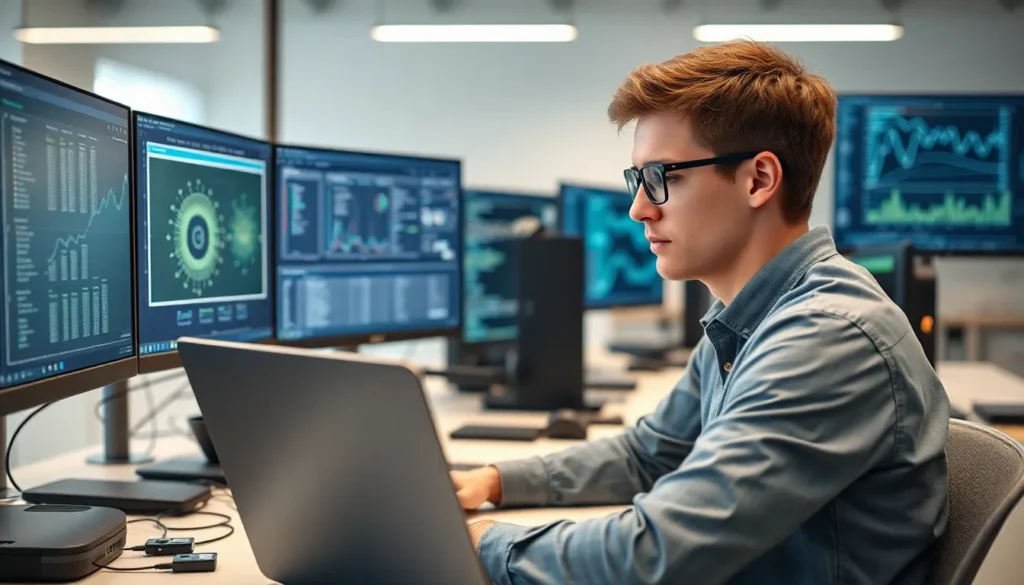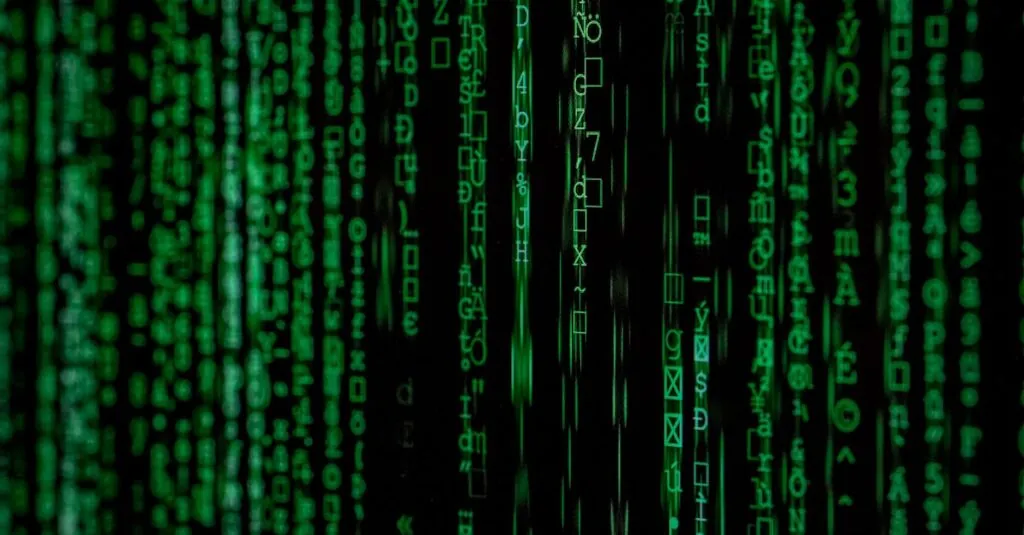Table of Contents
ToggleIn a world where textbooks are as outdated as dial-up internet, 3D printing is revolutionizing education. Imagine students crafting their own models of the solar system or designing prototypes for their inventions—all without the mess of glue and scissors. With 3D printing, learning transforms from passive to active, sparking creativity and innovation in ways traditional methods can’t match.
Schools are no longer just places for rote memorization; they’re becoming vibrant workshops of imagination. Students can visualize complex concepts, turning abstract ideas into tangible creations. It’s not just about making cool stuff; it’s about preparing the next generation for a tech-savvy future. So, why not ditch the boring lectures and let students bring their ideas to life? After all, who wouldn’t want to learn while playing with high-tech toys?
Overview of 3D Printing for Education
3D printing reshapes the educational landscape. It allows students to transform ideas into physical objects, making abstract concepts more concrete. Students engaged in hands-on projects gain deeper insights into subjects like science, engineering, and art.
Interactive learning has seen a remarkable boost from 3D printing. Learners design and prototype their creations, fostering problem-solving skills. This technology encourages collaboration, as students often work in teams to bring their visions to life.
Many institutions have adopted 3D printing to enhance curricula. Classes in STEM fields benefit from integrating this technology, as it aligns with modern industry practices. Early exposure to 3D printing prepares students for future careers in tech, design, and engineering.
Educators find 3D printing particularly effective for differentiated instruction. Personalized learning opportunities arise when students can work at their own pace and according to their interests. This flexibility accommodates diverse learning styles and encourages creativity.
Funding for 3D printing initiatives has increased. Grants and partnerships with tech companies provide resources for schools to implement this technology. With proper support, educators can create innovative classroom environments and expand students’ learning experiences.
Student engagement rises with 3D printing projects. Learning becomes more enjoyable when students can visualize their work. The enhanced experience promotes a passion for learning that stays with them long after they leave the classroom.
Benefits of 3D Printing in the Classroom
Students engage actively when using 3D printing, shifting their focus from passive absorption to hands-on creation. Increased enthusiasm occurs as learners design and print their projects, fostering a dynamic learning environment. 3D printing makes lessons memorable, retaining student interest and encouraging exploration. Schools that integrate this technology often notice heightened motivation among students. This shift in approach encourages collaboration and teamwork, essential for developing communication skills in a group setting.
Enhanced Engagement and Motivation
Engagement intensifies when students see their designs come to life through 3D printing. This technology transforms abstract ideas into tangible objects, sparking curiosity and boosting participation in class discussions. By building models or prototypes, learners experiment with concepts visually and physically, deepening their understanding. The creative freedom associated with 3D printing inspires students to take ownership of their learning, leading to greater investment in projects. As creativity flourishes, students develop a lasting interest in subjects previously deemed challenging or uninteresting.
Development of Critical Skills
Critical thinking thrives in an environment where 3D printing is utilized. Students learn to assess problems, brainstorm solutions, and iterate their designs based on feedback. This iterative process encourages resilience as they experiment, discover, and refine their projects. Collaboration is another vital skill honed through group projects, where learners must communicate and share responsibilities effectively. In addition, integrating 3D printing into the curriculum enhances technical skills and fosters creativity, preparing students for a technology-driven workforce. Overall, students emerge from these experiences with a richer skill set, ready to tackle future challenges.
Challenges of Implementing 3D Printing
Implementing 3D printing in education presents several challenges that schools face. Two major obstacles involve cost and resources, along with the training required for educators.
Cost and Resources
3D printing technology requires significant investment in equipment and materials. Basic printers range from $200 to over $5,000, which can strain school budgets. Additional costs stem from filament, software, and maintenance, creating a financial barrier for many institutions. Budget constraints often limit access to essential tools. Schools need to secure funding through grants, community partnerships, or fundraising events to overcome these financial challenges. Despite increasing interest in 3D printing, the cost can hinder widespread adoption in diverse educational settings.
Training for Educators
Proper training is crucial for effectively integrating 3D printing into the curriculum. Many educators lack the technical skills needed to operate printers or use design software. Training programs can provide invaluable support, yet limited resources often restrict the availability of such professional development opportunities. Schools must prioritize ongoing training to build educators’ confidence in utilizing the technology. Collaboration with local universities or organizations offering workshops can also enhance educators’ skills. A well-prepared teaching staff ensures successful classroom implementation and maximizes the impact of 3D printing on student learning.
Applications of 3D Printing in Different Subjects
3D printing serves as a versatile tool across various educational subjects. It enriches learning experiences and deepens student engagement.
STEM Education
In STEM education, 3D printing transforms theoretical concepts into practical applications. Students design and create prototypes, enhancing their understanding of engineering and scientific principles. Complex topics in physics, such as force and motion, become tangible through model creation. Collaborating on projects encourages teamwork and problem-solving skills, essential for STEM fields. Many educators report increased student enthusiasm and motivation when using 3D printing in lessons. Beyond the classroom, these hands-on experiences prepare students for real-world challenges. Integrating 3D printing ensures students develop necessary competencies for future careers in technology and engineering.
Arts and Design
For arts and design, 3D printing opens new avenues for creativity. Students explore artistic expression by turning digital designs into physical sculptures. The technology allows for experimentation with different materials and forms, enhancing their understanding of aesthetics and design principles. Individual projects encourage personal vision and innovation, fostering a unique artistic voice. As students produce and present their creations, they develop vital critiques and communication skills. Many art programs incorporate 3D printing to push boundaries in digital art and sculptural design. This innovative approach to art education inspires confidence and entrepreneurial mindset among budding artists.
Future of 3D Printing in Education
3D printing’s future in education promises further innovation and integration across various subjects. Enhanced accessibility to 3D printers and materials will drive widespread adoption in classrooms. Increased emphasis on hands-on learning prepares students for the demands of a tech-driven economy. Institutions focusing on STEM curricula benefit immensely from practical applications, enabling collaborative projects that reinforce teamwork and problem-solving skills.
Emerging technologies, such as improved design software and more affordable printers, will facilitate broader integration. Enhanced teacher training programs can empower educators to utilize these tools effectively. Educational partnerships with tech companies may provide ongoing support, ensuring instructors stay updated with advancements.
Future classrooms may see 3D printing as a staple, redefining project-based learning. Students will engage in deeper exploration of subjects like science and engineering, turning abstract ideas into physical prototypes. As engagement increases, so does curiosity and motivation, fostering independent and innovative thinkers.
Implementing creative 3D printing projects in arts education nurtures personal expression. Students will mold their ideas into tangible creations, promoting entrepreneurial mindsets. Expanding the use of 3D printing enhances artistic skills while building confidence.
Funding opportunities will likely continue to evolve, aiding institutions in overcoming financial barriers. Grant programs and community collaborations can secure resources necessary for 3D printing initiatives. Schools addressing budget constraints ensures every student benefits from technological breakthroughs.
Future iterations of 3D printing in education hold immense potential. As the technology advances, educators and students alike can expect transformative experiences that enrich learning environments. Growth in this field fosters a generation prepared to excel in an increasingly complex world.
Conclusion
Embracing 3D printing in education opens doors to a more engaging and innovative learning experience. As students interact with tangible creations they develop critical skills that extend beyond the classroom. The technology not only enhances understanding but also inspires creativity and collaboration among peers.
While challenges exist in terms of costs and training, the benefits far outweigh these obstacles. Schools that invest in 3D printing initiatives foster an environment where students can thrive. This transformation prepares them for a future that demands adaptability and technological proficiency.
Looking ahead the integration of 3D printing will continue to evolve. As accessibility improves and resources become more available the educational landscape will shift towards a more hands-on approach. This shift promises to cultivate a generation of curious and capable individuals ready to tackle the complexities of tomorrow’s world.



